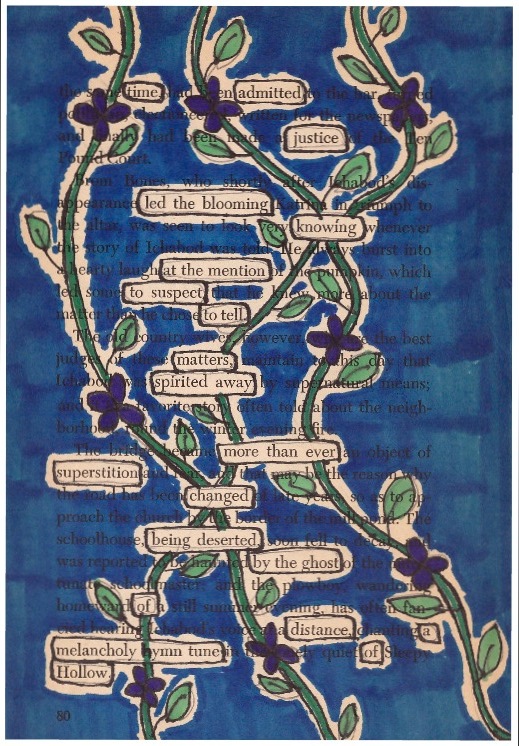

Some will enjoy the challenge of finding the poems “hidden” on the page. Visual learners and artistically inclined students are bound to love this creative opportunity. What messages did people’s poems give about their themes? Instead of thinking of words, people had to work with what was already on the page and transform it into something else.Why I Love Teaching Blackout Poetry (And Why You Will Too).īlackout poetry can turn into a piece of poetic and visual art. This activity was also about communication. Just like other forms of writing, poetry can be anything the author wants it to be. The poems people created in this activity structured words in meanings and rhythms, even if they didn’t rhyme or follow a traditional format. What do people usually think of when someone says ‘poetry’? Was this activity about poetry? People may disagree – when they think of poetry, they may jump to rhyming, broken sentences, or a pattern. This activity was all about trying new things. But you usually take very little attention. They should chat about what it means and how they pulled words together.īlackout poetry examples Make tea, ride a bicycle and penny-whistle. Everyone should share their poem with someone else.Everyone should circle the words they are using more obviously – they could press harder with their pencil or use a pen.Once everyone’s settled on a final poem, they should erase any circles around words they’re not using.If things aren’t working out, it’s OK to go back and repeat step three to find some more words. Everyone should go back through their poem – do they want to remove any words? Are there any spaces where they need to add something? Everyone should experiment with a few different possibilities.They should aim for about eight lines of poem – it’s up to them where a line stops and a new one starts. Everyone should piece together the circled words in the same order that they appear on the page (so, in English, top to bottom and left to right).If possible, pick words that work on their own. There aren’t any right or wrong answers here.ĭon’t circle more than three words in a row. They should lightly circle any words that connect to their theme word or resonate with them – it’s also OK to circle words just because they sound nice! The person leading the activity should remind everyone that this is all about self-expression. Everyone should read the page more carefully.The meaningful theme word decides the topic of the whole poem. Words may stand out because they have meaning or significance, for example, because they link to a personal value, a favourite feeling, or a special event. People can choose any word for their theme word – it’s about choosing something that stands out to them. Everyone should scan the page looking for a ‘theme word’ to inspire possible topics for their poem.Everyone should get into a space with a pencil and a page of text.This kind of poetry embraces randomness, and also gives people a chance to mix poetry and visual art. Blackout poets pick out single words or phrases from the existing text, then piece them together to make something new. The person leading the activity should explain that blackout poems are made using pages from books, newspapers, or magazines.

Has anyone seen this type of poetry before? The person leading the activity should show everyone the blackout poetry examples below.If you haven't got printed pages to use, you could try this online blackout poetry maker.You could ask people to suggest books to photocopy or ask them to bring photocopies of their favourite pages (if you do this, make sure to take some spares). It’s up to you whether you use old newspapers and magazines or photocopy pages from books.Scouts could also give this at go at home and share their blackout poems at the next session.It may work well to give people a choice of this activity, an activity for their Artist Activity Badge, or an activity for their Entertainer Activity Badge. Decide whether you want to run this activity as one base or option during a creative session.


 0 kommentar(er)
0 kommentar(er)
